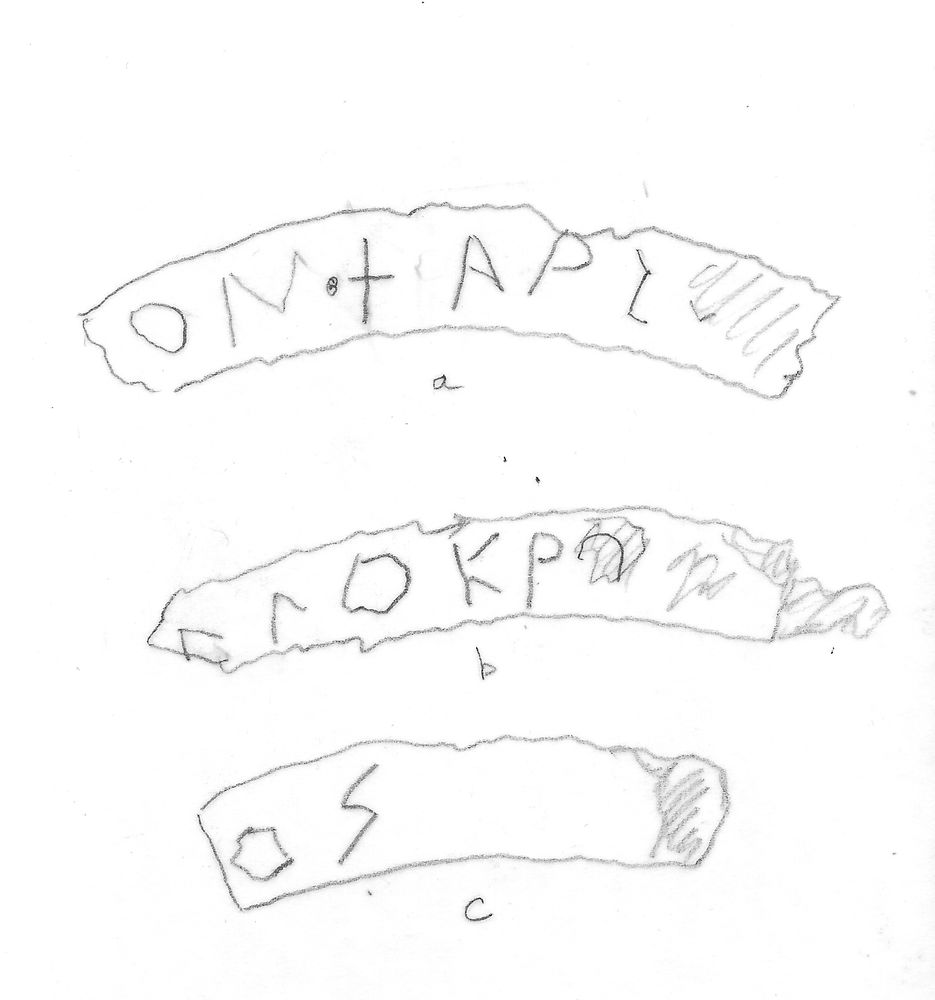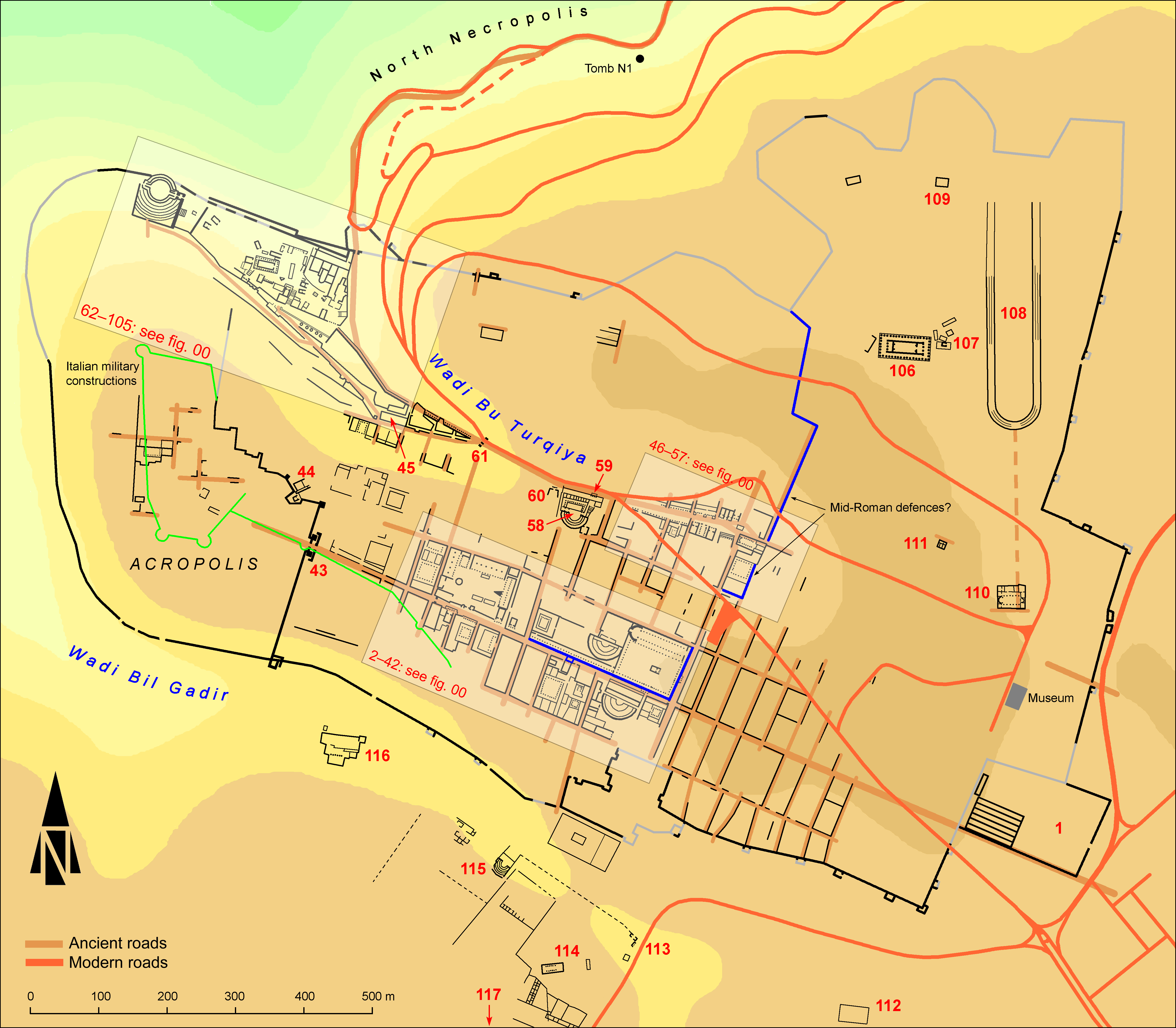EpiDoc XML:
IGCyr0792002
Trismegistos ID:
738376
Source description
Support: Three non-joining fragments of Attic black figure ware amphora, all from a flaring mouth of estimated diameter 0.20; presuming that the dimension given by the editor is the width, it is for fragment a 0.117, for fragment b 0.127, for fragment c 0.082.
Layout: Incised on the flat top of the rim, all three fragments form a single line.
Letters: Height unknown; alpha with inclined central bar, digamma, three-strokes iota, symmetrical lambda, + as khi.
Date: Second quarter of sixth century BC (context).
Findspot: Found between 1969 and 1978 at Cyrene ➚: Enclosed sanctuary of Demeter and Kore, area E11.
Place of origin: Findspot.
Last recorded location: Cyrene Museum, Storeroom of the American excavations, sherdboxes 23.3, 34.3 and 42.1. Not seen by IGCyr team.
Text constituted from: Transcription from previous editor.
Bibliography
Moore 1987, n. 5 (ph.), whence SEG, 37.1703; IGCyr 079200 ➚. Cf. Dobias-Lalou 2015, pp. 62-63, whence SEG, 65.2015.
Text
Apparatus
Fragm. b
b: Moore gives a diplomatic edition without any interpretation [---]+LOKRO[---] SEG in Latin alphabet
French translation
Intraduisible.
English translation
Not usefully translatable.
Italian translation
Intraducibile.
Commentary
The editor gave only a diplomatic transcription, from which SEG gave an inaccurate transcription into Ionic alphabet, and even into Latin alphabet for fragm. b!
The first letter of fragm. b being incomplete might be an epsilon or rather a digamma as Moore 1987 proposes. The second letter cannot be anything but a lambda, with a shape that does not belong to the Attic archaic alphabet. The name of the Locrians seems to stay here either as an ethnic or as a personal name. If the digamma was sure, it would give a clue to its etymology. However, as no other document, in Locria or elsewhere, does confirm such a fact, it seems more cautious to admit here an epsilon, which would be the end of the preceding word.
The final letter of fragm. c and the last letter of fragm. a are three-stroke iotas.
Fragm. c is a good candidate for the end of a sentence, followed by a blank. Both other fragments might also be taken in order b-a.
CC BY-NC-SA 4.0 Deed Attribution-NonCommercial-ShareAlike 4.0 International License.
All citation, reuse or distribution of this work must contain a link back to DOI: https://doi.org/10.60760/unibo/igcyrgvcyr2 and the filename (IGCyr000000 or GVCyr000), as well as the year of consultation.




